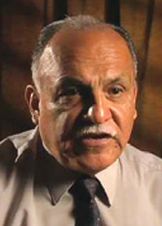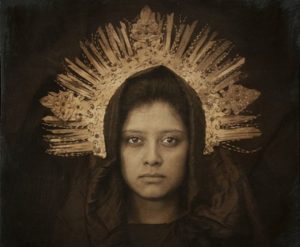I value this effort of Juan F. Martínez to put on the table a missiological issue to which most evangelicals in Latin America have not paid enough attention, even in countries with a high percentage of indigenous populations such as Bolivia, Peru, Ecuador, and Brazil. Recovering the memory of what took place during the Spanish and Portuguese “crusades” in the Americas is an important initial point in the agenda. My former colleague Stewart MacIntosh, a Scottish missionary who worked in Peru for thirty years, came out of his practice in order to undertake doctoral studies, and he “discovered” the efforts of several Spanish priests to translate catechisms and hymns into the Quechua language. He was especially attracted by the work of Jesuit José de Acosta, who wrote De procuranda indorum salute (About the Search for the Salvation of the Indians), a six-hundred-page book published in Salamanca in 1588.1 This is actually a missionary handbook on how to evangelize the Indians, and Acosta deals with the questions and the practices of his own day, evaluating them from a critical and biblical perspective. We evangelicals must be humble and informed enough to acknowledge that even in the year 2013, we do not have a study equivalent to Acosta’s, since we continue to be ignorant of the questions he raised as well as about indigenous religious realities.
One significant issue of debate among missionaries and conquerors in the sixteenth and seventeenth centuries was whether the natives were actually human beings. An important theologian from Salamanca doubted whether the natives could indeed be in fact human, but his position was debated by the Dominican Bartolomé de las Casas, a great defender of the Indians, who had missionary experience in Central America. Las Casas was highly critical of the use of violence as a means of coercion to convert the pagans, which was used by some missionaries during that era. In fact, some theologians suggested that the gospel was so profound and transcendent that the primitive mind of the Indians could not understand it. Therefore, they had to be civilized first and then evangelized, thus the saying “primero vencer, después convencer,” that is, “first to defeat and then to convince.” Violence and coercion could be used for the first step but not for the second. The Catholic Church could not keep her missionary enthusiasm beyond the mid-seventeenth century, and the kind of popular Catholicism practiced by the native peoples was perceived to have no redemptive elements and as a result was mostly used to keep the Indians under political control. The permanent shortage of priests during the eighteenth and nineteenth centuries made things worse.
There is enough research now about Protestant missionary work to allow us to make some general statements about the encounters in that time period. Evangelicals insisted on individual conversion to Christ, and as a result, a change of lifestyle. For many indigenous peoples, becoming evangelicals meant a change for the good in family life, economic practices, education, and health. In many cases it was a liberating experience. In some instances as Bible translation and indigenous leadership developed, there were also cases of group conversion and church growth, and questions about gospel and culture became increasingly pressing. While evangelicals tended to have a very rational and cerebral church life, indigenous churches were more attracted by prayer, miracles, and spiritual deliverance, which explains why different forms of Pentecostalism grew at an explosive rate among indigenous peoples. When missionaries were able to be self-critical of their methods and emphases, they learned to walk alongside these new churches and minister within them with relatively low degrees of conflict.
Lastly, I especially value the final part of Martinez’s paper where he both refers to the Iguassu and Cape Town documents that emerged from these missiological forums, and offers us some proposals for the future. My own missiological formation came out of debate and dialogue with Roman Catholicism and Marxism. Now that I live in Spain within an atmosphere of the decline of Christendom, I have to come to terms with the issue of religious pluralism, especially as it pertains to Islam. There are no easy answers, and I must learn a lot. Like the Spanish who went to the Americas in the sixteenth century, I find myself tempted to refer to Muslims as “a little less human than us Christians.” This attitude is partly fostered by the media stereotypes with which I am constantly bombarded. I have a lot of homework to do in relation to Islam. I am helped by conversation with some Latin Americans who are now carrying on mission in Muslim countries and see things in a different way. These brothers and sisters carry on “mission from below,” and that helps a lot!
Endnotes
1For a translation into English, see José de Acosta and Stewart G. McIntosh, De procuranda indorum salute (Tayport, Scotland: Mac Research, 1996).


